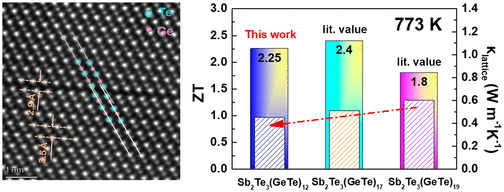Researchers in Shenzhen are working towards the ultimate source of renewable energy in wasted heat, with new progress having been made in enhancing the ability of specific materials to convert thermal energy into electric energy.
Earlier this month, Class of 2020 student Lou Qing from the Department of Physics at Southern University of Science and Technology has published as the first author of innovative research into the doping of thermoelectric materials. Working with Professor He Jiaqing and Ph.D. student Xu Xiao, Lou Qing had the paper published in ACS Applied Energy Materials (IF = 8.097) under the name, “Excellent Thermoelectric Performance Realized in p-Type Pseudolayered Sb2Te3(GeTe)12 via Rhenium Doping.” It was selected as the ACS Editors Choice for November, and was also published on their news channels.
Lou Qing has been studying new energy materials that directly convert thermal energy into electrical energy through differences in temperature. There are innumerable commercial and industrial applications for thermoelectric materials in both heating and cooling, while also improving the existing energy issues facing the world today. The use of germanium antimony telluride (Sb2Te3(GeTe)) n-based thermoelectric materials has long been considered to be a promising material due to their unique structure that provides lower thermal conductivity. However, these materials tend to lack high-quality electrical transport properties and thus development in this field has not continued substantially.
In this work, Lou Qing and the research group use an appropriate amount of rhenium (Re) doping to regulate the carrier concentration of Sb2Te3(GeTe)12 with the aim of increasing its power factor. The team also modulated the size of Ge precipitates in the material by both Re doping and specific heat treatment. It had been suggested that defects within thermoelectric materials scatter phonons and reduce the lattice thermal conductivity of the material.

Their research found that their research significantly optimized the overall thermoelectric performance of Sb2Te3(GeTe)12-based thermoelectric materials, reaching the lattice limit of GeSbTe systems. They have found a method that could both optimize the power factor of the thermoelectric material while also reducing its thermal conductivity. The simultaneous enhancements to Sb2Te3(GeTe)12-based thermoelectric materials makes them a reliable thermoelectric material for commercial and industrial applications.
Lou Qing (Class of 2020) was the first author of this piece, with Ph.D. students Xu Xiao and Huang Yi, postdoctoral researcher Bin Zhu, and NUS-SUSTech joint Ph.D. student Yu Yong. Chair Professor He Jiaqing was the correspondent author. SUSTech was the communications unit.
The research team thanks the SUSTech Pico Center for TEM experiments. Funding and support was received from the Natural Science Foundation of Guangdong Province, the leading talents of Guangdong Province Program, the Science, Technology and Innovation Commission of Shenzhen Municipality, the National Natural Science Foundation of China and the Climbing Program Foundation of Guangdong Province.
Article link: http://pubs.acs.org/doi/full/10.1021/acsaem.9b01915
Proofread ByDepartment of Physics
Photo ByDepartment of Physics, Qiu Yan